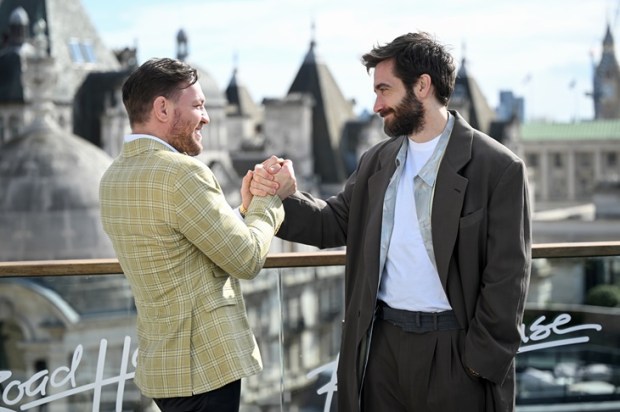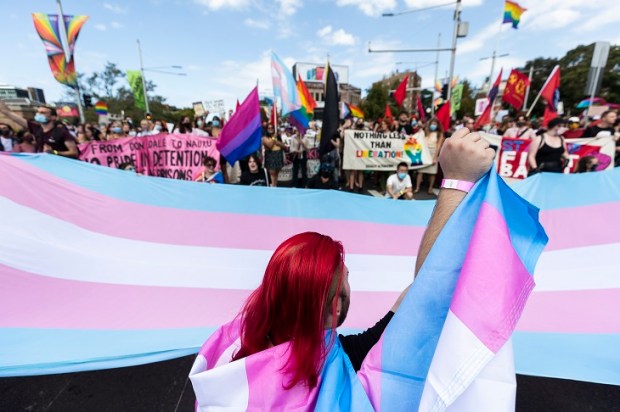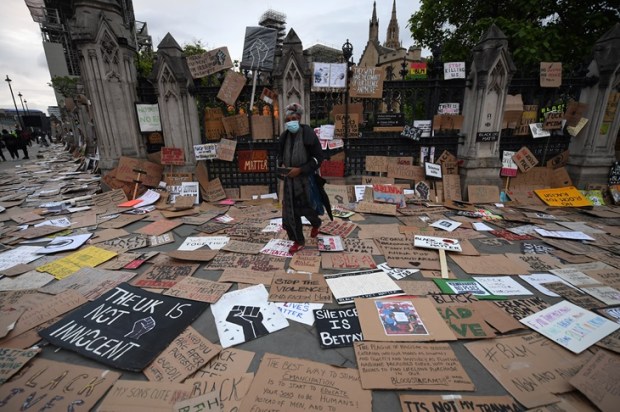The recent hullabaloo provoked by the United Patriots Front’s rally on St Kilda beach, ostensibly occasioned by the “thug life” creed of a noticeable number of youths of African descent, told us two things. It told us, firstly, of the mounting exasperation over antisocial behaviour by said youths, albeit in this instance expressed by people generally regarded beyond the pale. But secondly, and more significantly, it told us of the continuing misunderstanding surrounding the nature of this youth-crime phenomenon.
Believing that the youths in question can be deterred from their unfortunate behaviour by snarling at them, or by law enforcement getting tougher on them, is to bark up the wrong tree. And, no, such antisocial behaviour does not stem from coming from a war-torn African country and any associated trauma, a common assumption, one probably favoured by defence lawyers acting on their behalf or by do-gooders in general. If trauma were the cause of such behaviour, then Rwanda, a country suffering society-wide trauma, ought to be one of the most violent countries in the world, instead of being one of the safest.
Attracting the disproportionate attention of police in particular, and society in general, is precisely what these youths set out to do. They do this because this is an essential aspect of the subculture to which they subscribe, namely gangsta-rap subculture, also known as cool-pose culture or gangsta-hip culture. This culture comes from America, and it is only there, at its source, that this problem can be fixed, something about which I have written before.
Residing in Brazil in 2009, I was riding the subway in Rio one time, approaching the end of the line in Ipanema. I noticed four young men on the other side of the carriage acting up, attracting attention to themselves and generally behaving in a manner not typical of Brazilians. As the train arrived at the station, they came and stood by the door where I was, with one standing next to a well-dressed gentleman in a suit. When this gentleman looked over at him, he defiantly shot back: “What about it?” The gentleman just rolled his eyes at this bizarrely aggressive behaviour and continued to read his newspapers.
A number of things were strange about these misbehaving young men. First of all, they were all uniformly “black”, which is unusual in Rio, because it would have had to have been such a contrived and affected affair, in the same way that groups of people in Australia hanging around with each other on the basis of having the same hair colour would be strange and unnatural.
Secondly, Brazil is a nation of diplomats. After a year in Rio, I found it impossible to imagine anyone being rude, mean or nasty to anyone else in public. Sure, they have their problems with violent crime, but I would find people sitting down and interacting with each other as if they were close family members or friends of long standing, only to realise that they were actually unknown to each other once they got up to leave and thought to introduce themselves. So the behaviour of these four young men really stuck out like a sore thumb.
I recognised one of them as I had seen him on TV a few times in one of the Brazilian telenovelas that dominate evening viewing. I had also seen him interviewed during a daytime show over the interesting fact that he resided in the favela of Vidigal, a stone’s throw away from some of the most expensive real estate in the world that line the world-famous beaches of Leblon and Ipanema. Another interesting fact revealed during the show was that he spoke English, something unusual given that learning English was normally a pursuit of the middle and upper classes.
Then it all made sense. Because he spoke English, he was exposed to the English-speaking world, dominated by American cultural influence. Brazilians have traditionally treated skin colour as a superficial physical characteristic, much in the same way as we treat hair colour. But by being exposed to American cultural influence, he would have come to realise that skin colour held much more meaning and significance than that of merely being an inconsequential physical characteristic. Skin colour represented identity. And because he, residing in a favela, was of a lower socioeconomic status, the identity that would have spoken loudest to him, the siren song that would have so drawn him inexorably to itself, would have been the specific subculture expressed in gangsta rap.
He would have educated his friends – who would need to be “black” in appearance – on this colour-based identity. And so they would have set about going around town expressing this newfound identity, with its ‘tude (attitude) and general disregard and contempt for the social norms and conventions that normally govern everyone else.
Thankfully, the effect of such an unfortunate cultural influence is quite limited in Brazil. Most Brazilians do not speak English, and so most “black” Brazilians are not aware of the “identity” that is meant to attach to their skin colour. There is little in the form of foreign content on the country’s television channels, telenovelas dominating evening viewing (four back to back when I was there, starting at 4.00pm, with the news interjecting in between). By the time the dubbed American movie came on at 10 or 11.00 pm, everybody has already gone to bed.
However, a language barrier is not always a defence against the nefarious influence of gansta rap. For some reason in Russia, the young have elected to ignore the colour bar that normally attends to rap, and have embraced it as their own – with predictable consequences. I was aware of the hit Russian rap song made in 2014 praising Putin, made by two African doctors recently graduated from Volgograd State University (gangsta nerds), but I thought it was just a novelty thing and did not realise that rap was actually genuinely popular in Russia. Oh, well. Too bad for them.
Rap scholar Charis E Kubrin, in her paper entitled “Gangstas, Thugs, and Hustlas: Identity and the Code of the Street in Rap Music”, observed the utility of “rap music, a genre consistently noted for its focus on masculinity, crime, and violence” in coming to understand what she refers to in her paper as street code, particularly gangsta rap. She further notes that “[s]ince its early pioneers were gang members, gangsta rap relates to the life experiences of the rappers themselves, and its lyrics portray gang and ghetto life from a criminal’s perspective”. The scholar aimed in her study to observe how “the lyrics offer portrayals of violence that serve many functions including establishing identity and reputation and exerting social control.”
In her examination specifically of the code of the street that governs the subject matter of rap, she notes:
On the streets, the image one projects is paramount, and at the top of the hierarchy is the ‘crazy’, ‘wild’, or ‘killer’ social identity. A person’s public bearing must send the message that he or she is capable of violence when necessary… that youth often created altercations with the sole purpose of building respect… that young men committed robberies in order to impress their peers and upgrade their social status… In short, violence is thought to be the single most important critical resource for achieving status among those who participate in street culture.
It is curious that while we restrict alcohol or tobacco advertising aimed at minors, as well as other content deemed inappropriate for young eyes and young ears, we seem to think that the poisonous culture celebrated in gangsta rap will miraculously have no effect when exposed to young minds.
Because rap and hip-hop are colour-coded genres of music, largely accepting or refusing admission on the basis of colour, gangsta rap may have been on the airwaves for many years in Australia, but without a discernible response from the listening public, who were well aware that they could look but not touch, for it was not “their” culture. Now that there is a population whose young ears are positively ringing from the siren song of gangsta rap, all of a sudden the effect is glaringly apparent.
Thinking that bad press and loud public censure will whip the youths in question into line fails to understand that the subculture to which they subscribe specifically prescribes that they create as much bad publicity for themselves as they possibly can, only in order to exult in the resulting infamy, for there is no such thing as bad publicity for them. And thinking that a lack of tougher law enforcement is the issue fails to understand that attracting the disproportionate attention of police is rather basic Thug Life 101, jail time being considered a rite of passage within this subculture, something toward which any self-respecting wannabe gangsta should aspire. Of course, if they are old enough, then the state must oblige them and chuck them in the slammer. But it gets a little trickier when dealing with fourteen-year-olds.
All that can be done is to encourage Americans to start to have a serious conversation about this poisonous subculture that they are producing (a subculture that is very profitable if you happen to hold shares in America’s booming private-prison industry). Americans have many looming problems to which the phenomenon of Donald Trump, Bernie Sanders and now Alexandria Ocasio-Cortez give voice, problems like crushing college debts, the abandonment of the working class and the shrinking of the middle class. The excessive imprisonment of Americans is another problem, something to which gangsta rap is no doubt a major contributor.
An Australian immigration minister who publicly bans from entry into Australia any gangsta rapper seeking to do a tour, publicly associating them with this youth-crime problem, will go a long way towards getting this conversation started in America, raising its importance in the priority list of Americans worried about the direction of their country.
Kevin Andrews, when he was the immigration minister, made some fledgeling steps towards this end by denying a visa to rapper Snoop Dogg because of his poor character. Who knows, maybe the immigration minister in this government, or any future one, may be willing to pick up from there.
Got something to add? Join the discussion and comment below.
Got something to add? Join the discussion and comment below.
Get 10 issues for just $10
Subscribe to The Spectator Australia today for the next 10 magazine issues, plus full online access, for just $10.


























Comments
Don't miss out
Join the conversation with other Spectator Australia readers. Subscribe to leave a comment.
SUBSCRIBEAlready a subscriber? Log in